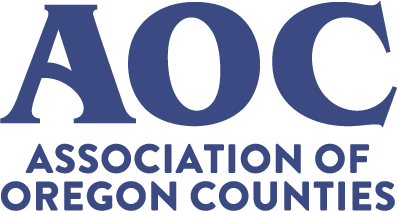
Jan 27, 2025 | AOC News
The Association of Oregon Counties (AOC) has hired Justin Low as a legislative affairs manager, covering issues related to governance, revenue, and economic development.
Low brings considerable experience in legislative affairs to AOC, having previously served as a staffer in the Capitol and as the Associate Director of Policy and Research at the Oregon Justice Resource Center. In these roles, he was responsible for analyzing legislation, conducting fiscal reviews, and effectively communicating policy positions to a wide range of stakeholders.
“Justin’s expertise in policy research, ORS and OAR proficiency, and understanding of the legislative fiscal process will be invaluable assets to our team,” said Gina Nikkel, AOC executive director.
Contributed by: Erin Good | Communications Coordinator
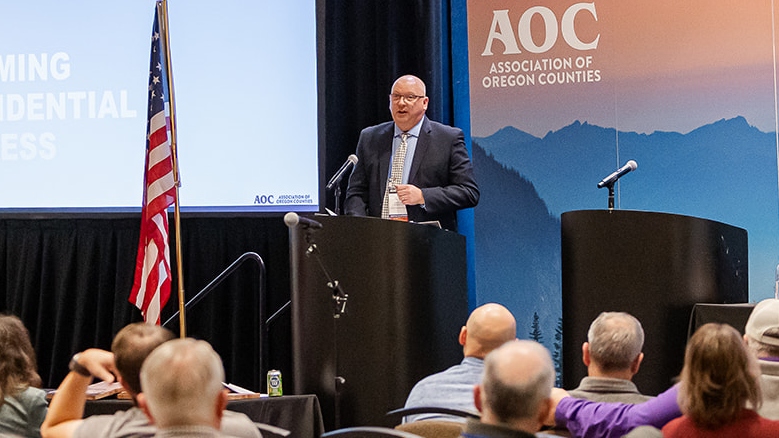
Dec 18, 2024 | AOC News, Health & Human Services, News
In his inaugural address at this year’s annual conference, the Association of Oregon Counties (AOC) President John Shafer (Umatilla County) announced his 2025 presidential initiative, which will “focus on mental and behavioral health to equip us all to exercise our local mental health authority to foster healthy, vibrant, and safe counties across Oregon.”
Shafer’s dedication to mental and behavioral health began during his time with the Umatilla County Sheriff’s Office where he saw firsthand the need for a cohesive and coordinated system of care that provides both behavioral and mental health services. As a newly elected Umatilla County Commissioner, Shafer sought out a service provider that would offer comprehensive behavioral and mental services under one Community Mental Health Program (CMHP), and this model is what Umatilla County still uses today.
“Counties are the local mental health authority,” Shafer explained. “We are responsible for coordinating a continuum of evidence-based services and support for mental health and substance abuse prevention, treatment, and recovery, mobile crisis response, jail diversion, and court mandated treatment that meet the assessed needs of our residents.”
Shafer encouraged fellow county commissioners to familiarize themselves with their CHMP directors, local service providers, and Coordinated Care Organizations (CCOs), and to gain a deeper understanding of their county’s system of care.
Shafer’s presidential initiative kicks off in January with the first in a series of monthly challenges.
January’s challenge:
- Read this short primer on local mental health governance in Oregon, authored by Malheur County CMHP Director Steve Jensen, and to join a brief presentation by Greater Oregon Behavioral Health (GOBHI) CEO Ann Ford at the AOC Legislative Committee meeting on Monday afternoon, Jan. 13.
Stay tuned for additional learning opportunities throughout the year and a celebration at the 2025 AOC Annual Conference.
Contributed by: Erin Good | Communications Coordinator
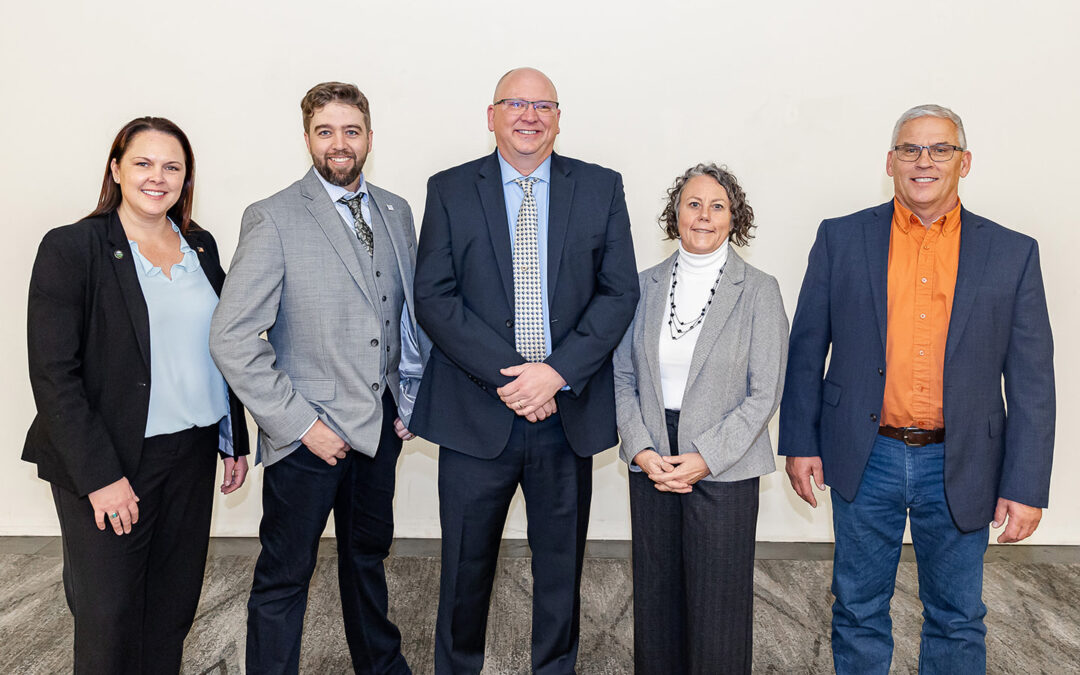
Dec 12, 2024 | AOC News, News
The Association of Oregon Counties (AOC) swore in a new executive committee during the 2024 AOC Annual Conference in Eugene, Ore. at the association’s annual business meeting.
Umatilla County Commissioner John Shafer now serves as the association president. Shafer is joined on the AOC executive team by first vice president, Tillamook County Commissioner Erin Skaar; second vice president, Sherman County Judge Joe Dabulskis; treasurer, Lake County Commissioner James Williams; and immediate past president, Marion County Commissioner Danielle Bethell. The executive team will work together during 2025 to lead the organization to success and ensure AOC meets its core mission of uniting Oregon’s 36 counties.
AOC currently has five policy steering committees. The committees are staffed by the Legislative Affairs department and are chaired by AOC members appointed yearly by the AOC president. President Shafer appointed the following co-chairs to AOC steering committees:
Governance, Revenue, and Economic Development
- Columbia County Commissioner Casey Garrett
- Clatsop County Commissioner Lianne Thompson
Health and Human Services
- Wasco County Commissioner Phil Brady
- Washington County Commissioner Nafisa Fai
Natural Resources
- Union County Commissioner Paul Anderes
- Polk County Commissioner Craig Pope
Public Safety and Veterans
- Baker County Chair Shane Alderson
- Polk County Commissioner Jeremy Gordon
Transportation and Community Development
- Umatilla County Commissioner Dan Dorran
- Benton County Commissioner Nancy Wyse
Contributed by: Erin Good | Communications Coordinator
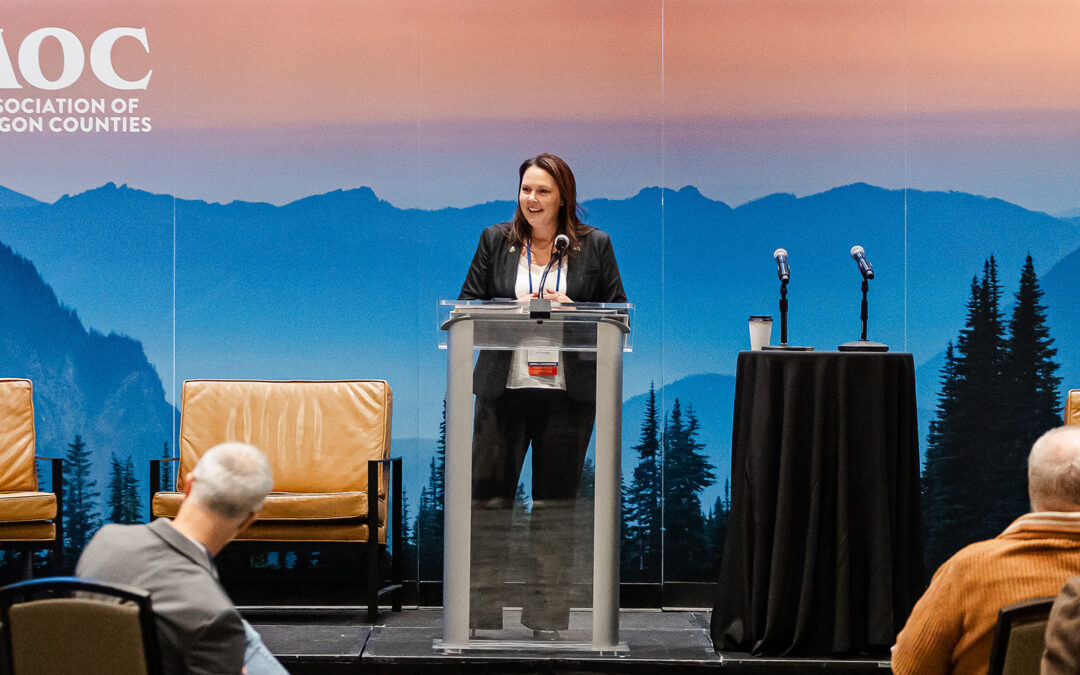
Dec 5, 2024 | AOC News, Events, News
Over 600 county officials, agency leaders, partners, and exhibitors converged at the 2024 AOC Annual Conference held Nov. 19-22, in Eugene, Oregon. This three-day event focused on networking, learning, and building relationships to better serve Oregon’s communities.
Marion County Commissioner Danielle Bethell, the outgoing AOC president, emphasized the importance of collaboration and engagement. “The conference reflected the work of the association this year,” said Bethell, “where we showed up, worked out our differences, and came together to advocate for all counties.”
Bethell passed the torch to Umatilla County Commissioner John Shafer, who will lead the organization in 2025. Other newly elected officers include First Vice President Erin Skaar (Tillamook), Second Vice President Joe Dabulskis (Sherman), and Treasurer James Williams (Lake). Bethell was installed as Immediate Past President.
Both general sessions focused on navigating our differences. Keynote speaker Tareq Azim challenged the audience to embrace fear and shared tools to encourage them to create spaces to address uncomfortable topics. Kit Chalberg, Senior Director, Programs for Convergence, led an interactive session on how to bridge divides in our organizations and communities.
A special orientation was held for newly elected commissioners, judges, and chairs. This half-day session provided an opportunity for commissioners-elect to hear tips for a successful first year in office from the AOC Executive Committee and the Oregon Government Ethics Commission. All newly elected commissioners are invited to attend AOC’s County College, which begins in January.
Educational sessions addressed critical issues facing Oregon’s counties, including transportation funding, rural housing, wildfire mitigation, and land use policy. Key themes included the need for sustainable funding, innovative partnerships, and data-driven approaches to address these challenges.
Governor Tina Kotek joined the conference to express her gratitude to county leaders for working tirelessly to lift up their communities. She emphasized the importance of a strong partnership between the state and counties, highlighting shared values and a commitment to collaborative problem-solving.
The conference also featured a lunch session with Western Interstate Region (WIR) President Wes McCart, an update from the Oregon Public Utility Commission, and numerous networking opportunities, including an agency partner meet and greet and meetings with federal delegation staff.
The conference concluded with “Wander Oregon,” a product tasting that showcased the diverse offerings of Oregon’s counties. Attendees sampled an array of local delights, including cheese and charcuterie, pastries and pies, handcrafted chocolates, local honey and lavender, craft beers and wine, and authentic fry bread.
Executive Director Gina Nikkel reflected on the conference, stating, “This invaluable time together allowed us to strengthen connections, identify shared goals, and collaboratively work toward solutions that benefit our communities. We look forward to working with President Shafer and all our members next year to continue supporting counties and their communities.”
Contributed by: Erin Good | Communications Coordinator
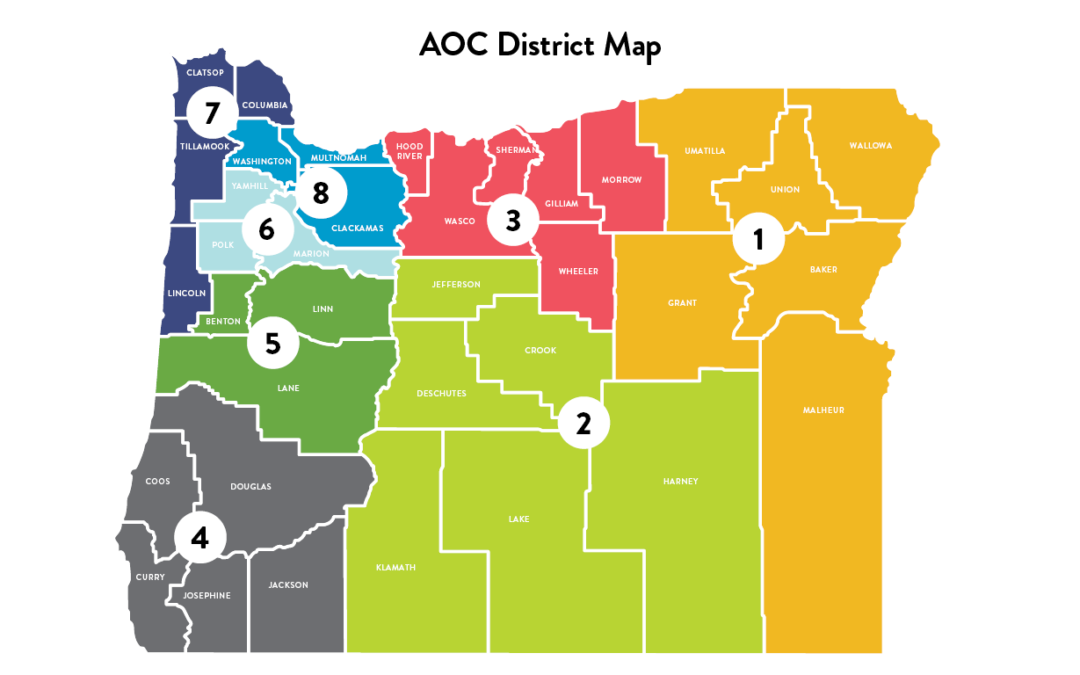
Oct 29, 2024 | AOC News
The Association of Oregon Counties (AOC) wrapped up its 2024 district meetings in Curry County on Friday, Oct. 11, following a month-long tour across Oregon that began in Washington County in September.
These in-person meetings are held every fall in AOC’s eight regional districts and are hosted by a member county within each district. District leaders, who serve on AOC’s Board of Directors and legislative committees, play a key role in ensuring regional representation in the major organizational decisions and policy positions for the association.
“AOC extends its gratitude to the member counties that hosted us this year, as well as to all the members, affiliate organizations, and partners who joined us,” said Executive Director Gina Nikkel. “Our organization is stronger when everyone participates, enabling us to achieve even better outcomes for our counties and communities.”
At the 2024 district meetings, Nikkel presented an in-depth overview of the proposed budget for the upcoming year and reviewed proposed AOC bylaws amendments. Both items will be considered for adoption by the full membership at the AOC Annual Business Meeting during the 2024 Annual Conference in November. These meetings also provide an opportunity for AOC staff and district chairs to gather feedback, which is shared with the AOC Board of Directors. The Board then makes recommendations on both the budget and bylaw amendments to the full membership.
AOC department directors also joined district meetings this year, providing updates on key accomplishments and outcomes for AOC member counties.
- AOC Member Services Director Kristen Paul celebrated the hard work and dedication of the AOC membership committee, highlighting their significant contributions in the growth of the partner program and in charting a long-term path and opportunities for the program to continue to support AOC’s membership.
- AOC County Road Program Director Brian Worley previewed the 2024 County Road Needs Study and discussed advocacy efforts in preparation for the upcoming negotiations on the transportation package during the 2025 legislative session.
- AOC Legislative Affairs Director Mallorie Roberts reviewed the department’s successful advancement of AOC policy priorities during the 2024 legislative session and presented the AOC’s 2025 Policy Priority Platform.
In addition to AOC business and information, district meetings hold time for a “hot-topics” discussion on key issues facing the region’s counties. This year the major themes discussed at district meetings included public safety and health (particularly opioid and deflection programs); infrastructure and energy development; property tax issues; and workforce challenges. These topics reflect common priorities across multiple regions, with local variations based on regional needs.
Meeting information, recordings, and materials can be found here.
Contributed by: Erin Good | Communications Coordinator

Sep 30, 2024 | AOC News, Events
AOC’s Annual Conference, held in Lane County, Nov. 19-21, draws together a cross section of elected officials, county staff, partners, and other participants for educational opportunities, leadership development, and networking.
AOC President and Marion County Commissioner Danielle Bethell was instrumental in shaping the programming for this year’s conference. Her focus as president — fostering engagement and collaboration — will be evident through numerous opportunities, including an expanded attendee lounge to enhance connections.
“This year’s conference will embody our motto — United Counties, United Oregon,” said Bethell, “and serve as a powerful reflection of the critical work counties do for Oregon and the collective impact that comes from collaboration.”
The opening general session keynote speaker will present on conquering fear. In addition, a dynamic lineup of educational workshops will provide an in-depth exploration of critical issues impacting the future of our communities:
- 2025 transportation package
- Oregon’s land use system
- County deflection programs
- Wildfires
- County assessment and taxation
- Communicable diseases
- Homelessness
- Community corrections
Attendees from rural and urban counties, large and small, participate in the three-day event aimed at improving residents’ lives and the efficiency of county government.
“AOC’s Annual Conference is an opportunity to celebrate the progress we’ve made and strengthen the partnerships that allow us to deliver even better outcomes for the people of Oregon,” said Executive Director Gina Nikkel. “I look forward to connecting with our members, partners, and county staff from across the state.”
Online registration closes Friday, Nov. 1. Find more information and view the agenda on AOC’s conference webpage.
Contributed by: Erin Good | Communications Coordinator

